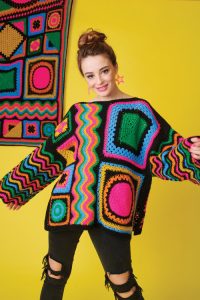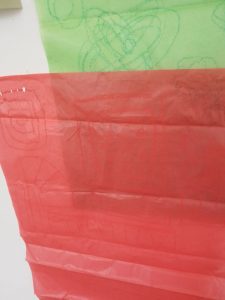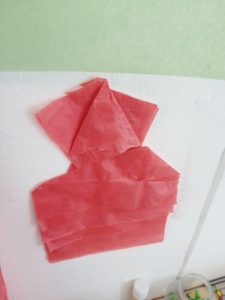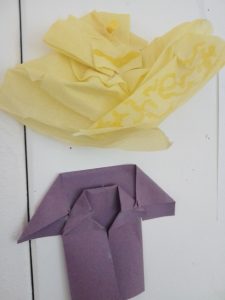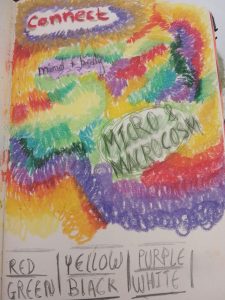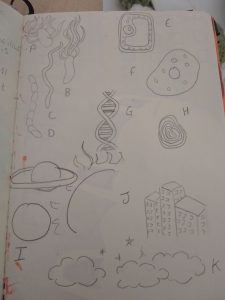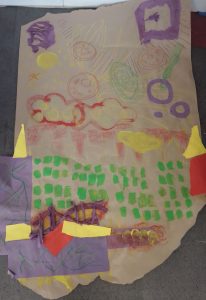Art has always been a source of freedom and has inspired new visions, often by the expression of revolutionary ideas and introducing questions to meditate on change within our society. There is indeed a radical and inspiring personality of art, alongside a fluidity that lets numerous demographics express vital aspects of their existence. Naturally there is a wide array of LGBTQ+ artists, a collection of queer creatives that open up on their lives ranging from experiences of love and relationships, the facets of gender, the deep history of the community, all the way to the violence, discrimination and hardship faced. This essay will aim to look at current artists who are apart of the LGBTQ+ community and their diverse experiences. Moreso, we will be focusing on expression of the artists in the community within historical and current context, and finally concluding on how art functions within the community to represent themselves. With this in mind, the mediums will be subjective based on the artists choice, as this essay is primarily focused on comparison and demographic. Comparisons with historical pieces will be briefly made, but solely for contrast as we are fixed on the modern queer art scene.
Prior to the twenty-first century, knowledge of artists whose lives intertwined with the LGBTQ+ community would be left to speculation. Artist such as Frida Kahlo[1] and DaVinci[2] would be left to question, with many more left silenced by their societies with their art and other historical records only left to re-contextualise their work. It would seem that even early contemporary history would leave many restricted, a mirror onto historical attitudes of non-normative behavior. This reflective nature of art would parallel the energy and zeitgeist of the times, as highlighted by famous modern artist David Hockney through his work of the sixties such as his ‘Man in Shower in Beverly Hills’ painting[3] – Hockney’s works capturing the steady rise of fearlessness that in the late sixties would amount to the stonewall riots[4]. Historically, the use of art as a tool to communicate queer identity has remained possible, albeit it’s potential nowadays is aknowledged more than previously[5].

Photography by Naima Green
One vital subject to discuss is the contrast of how aged contemporary queer art compares to the current understanding of queer identity and its relevancy to current communities in the LGBTQ+ demographic. When discussing remembered queer artists, said discussions circulates around tight and accepted forms of representation. It is arguable that contemporaries made themselves palatable to a dangerously heterosexist and cissexist society by the deliberate ambiguity of representation in their work, and further with the continuations of these systems into our current time, a blurring of presenting their work in media[6]. There was a restriction on sexuality, an enforcement of a gender binary – little room for queer people’s expression. This lack of available explicit representation has left a cavity in discussing the nuances of queer identity alone. However with the march of time and arrival of our present, the topic of the LGBTQ+ community in multiple forms of media has become more liberated, including the realm of art.
Now, within the twenty-first century, queer identity and it’s community have come to the forefront of mainstream discussions and with it the ability for LGBTQ+ individuals to access and communicate on a larger scale through the medium of art. Alongside this wave of representation comes intersectionality with queer people of colour and nuanced discussions around lesser represented people within the community. A bold example includes Fabián Cháirez[7], a gay Latino who cross oil paintings that reimagines Latin-American masculinity within a more explicitly queer lense, much of which causing a stir in Mexico[8]. Similarly we have the ever growing recognition of photographer Naima Green[9], showcasing the limitless and fluid realm of queer expression, bringing awareness to transgender and nonbinary people and breaking down concepts of gender stereotypes and identity. Being African-American herself, Naima Green too successfully includes numerous racial and ethnic identities within the work of her subjects. This inclusion remains vital for the community as to ensure the awareness of how complex queer identity is and to allow the observers to appreciate such a unique and complicated community. Lists and articles online and on numerous media sites around the intersectionality of the LGBTQ+ demographic have been soaring[10], a loud and unignorable example of how recent modern art has flourished in it’s liberation of expression for these people.
Thus far we are able to assert that there has been a growth in LGBTQ+ representation from queer artists, and that the artworld is broadening through this increase in diverse artists. Yet, has the art scene been effective in allowing this groups to be explicit? What borders still exist in the art world that is limiting this communication? With queer identity coming to the forefront of our society, we are faced with the impending force of rainbow capitalism[11] – the community therefore becoming commercialized and the subjects of LGBTQ+ identity evolving into a consumable subject for modern outsiders of the community. And with the domination of conglomerate companies[12] and businesses in the modern market by the tool of integration[13], there are numerous instances wherein the queer art scene easily becomes a target for those conglomerate powers to prey upon through.

Art by Fabián Cháirez
Similarly, the art critic John Berger otherwise illustrates the methodology of capitalism within art; “contemporary advertising utilises the skills of artists and the latest artistic techniques merely to sell things for consumption in a capitalist market”[14]. Here it is apparent that Capitalist society holds no genuine intention towards the betterment of LGBTQ+ artists, rather the narrative of utilizing oppresses people for their label is highlighted, as Karl Marx also affirms “The object of art, like any other product, creates an artistic and beauty-enjoying public. Production thus produces not only an object for the individual, but also an individual for the object” – here Marx affirms that under capitalism, the minority classes become objects themselves by the control of upper class companies. Here rainbow capitalism transforms the progressive and fighting queer into a tool and thus the community becomes jepordised by the bastardisation of the artists intentions as their art is mutated from a form of communication and expression to an item intended for ownership. This system furthermore only traps the LGBTQ+ community and enforces the authority of cissexist and heterosexist hegemony over the demographic, further censoring and distorting the community in an effort to subdue any radical power from the queer demographics.
In conclusion, we must not only celebrate but also embrace the massive growth of queer artists as well as the huge growth in an array of LGBTQ+ artists gaining recognition and pushing to be heard. However, there must be a greater scale of critical thinking when considering the threats towards the community and how the powers of our cis-heteronormative society restricts these forms of representation. The sum total of this essay thus confirms that indeed, the art scene itself proves effective in expressing LGBTQ+ Identity, whilst also emphasizing the lurking threats within the art market and how there is still a fight to be had with authority that suppresses and limits these artists and their community.
Bibliography:
[1] Frida Kahlo (1907-1954) – Queer Art History – www.queerarthistory.com
[2] The Queering of Leonardo da Vinci – www.Quadrant.org.au
[3] ‘Man in shower in Beverly Hills’, David Hockney, 1964 – www.tate.org.uk
[4] Stonewall then and now – www.news.harvard.edu
[5] Challenging the Canon: How Artists have Raised LGBTQ+ Awareness Through Art – www.theartling.com
[6] A Recent History of Censorship of LGBTQ Art – www.observer.com
[7] Fabián Cháirez | Biography – MutualArt – www.mutualart.com
[8] Protesters Storm a Mexico Museum Over a Painting That Depicts Revolutionary Emiliano Zapata Nude (and Wearing a Pink Sombrero) – www.news.artnet.com
[9] Pride Spotlight: Photographer Naima Green Is Documenting the Afro-Queer Present – www.observer.com
[10] Works for the Now, by Queer Artists of Color – www.nytimes.com
[11] What is Rainbow Capitalism and Why is it Harmful? – www.lgbtqandall.com
[12] conglomerate – www.britannica.com
[13] ‘The Cultural Industries’ written by David Hesmondhalgh
[14] ‘Ways of Seeing’ written by John Berger
[15] ‘ A Contribution To The Critique of Political Economy’ written by Karl Marx

